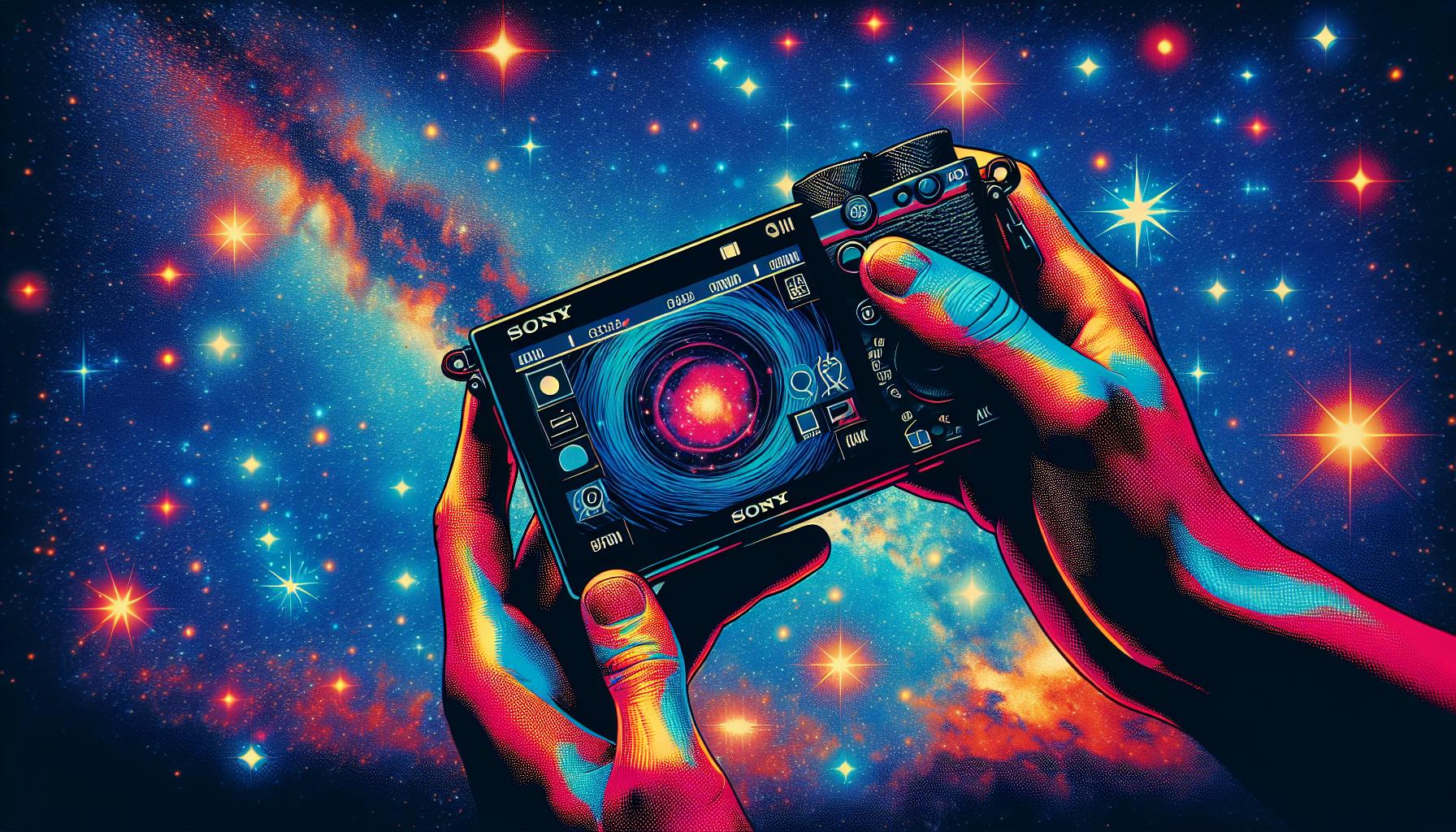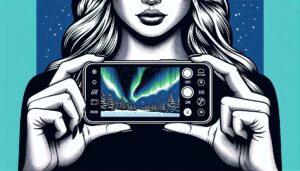This site contains affiliate links to products. I may receive a commission for purchases made through these links.
If you’re like me, you’re always looking for the best gear to capture the night sky’s magic. That’s where the Sony a7iii comes into play. It’s a game-changer in the world of astrophotography, and I’m here to tell you why.
This full-frame mirrorless camera is packed with features that make it ideal for shooting stars. With its impressive low-light performance and high-resolution sensor, the Sony a7iii is ready to take your astrophotography to the next level.
But it’s not just about specs. The a7iii’s user-friendly interface and customizable settings make it a dream to use, even when you’re under a sky full of stars. So, let’s dive in and explore what makes the Sony a7iii a top pick for astrophotography.
Low-light performance
Under a clear, moonless night sky, away from the light pollution of cities, there’s an entrancing splendor waiting to unveil itself. The a7iii, packed with sophisticated technology, is designed to capture this enchanting spectacle.
The key game-changer of the Sony a7iii, which makes it perfect for astrophotography, is its exceptional low-light performance. Don’t we all love stargazing? But capturing those distant, twinkling dots and vast celestial bodies is an intricate task. It’s the a7iii’s low light handling ability that outshines here.
Diving into the technicalities, the Sony a7iii features a full-frame 24.2MP Back-Illuminated Exmor R CMOS Image Sensor. This sensor in conjunction with its BIONZ X image processor allows for clean, noise-less images even at high ISO values. The result? More details, more stars, and more celestial wonders captured in your frame without losing clarity!
Furthermore, I have found the a7iii’s dynamic range, which refers to its ability to capture detail in both shadows and highlights, to be of top-notch quality. This, together with an efficient ISO range of 100-51200, expandable to 50-204800 for stills, could capture a deep sky object with faint stars effortlessly. It essentially means astrophotographers can shoot longer exposures without introducing excessive noise.
Some exciting key facts about the Sony a7iii low-light performance include:
| Key Fact | Details |
|---|---|
| Full-frame 24.2MP Back-Illuminated Sensor | Minimizes noise in high ISO ranges |
| BIONZ X image processor | Provides higher image quality |
| ISO range of 100-51200 (expandable to 50-204800 for stills) | Capture faint stars in deep sky |
| High Dynamic Range | Details in both shadows and highlights |
Through years of capturing the dark skies, it’s been the a7iii’s low-light performance and high-resolution capabilities that have made it my go-to device. Stay tuned as we delve deeper into our astro-journey with this maverick of a camera.
High-resolution sensor
The worth of the Sony a7iii’s 24.2MP Back-Illuminated Exmor R CMOS Image Sensor should certainly be underlined as it indisputably contributes to its impressive performance in astrophotography. This sensor is designed to gather more light, propelling it to deliver outstanding results when shooting in low-light conditions – such as an astronomically themed workout.
Moreover, this full-frame sensor is capable of delivering images with stunning clarity and minimal noise, even when working at the maximum ISO setting of 51200. There’s a particular sharpness that’s always present in the photos, which this sensor creates and that speaks volumes about its capabilities.
This innovative image sensor techniques combine with BIONZ X Image Processing Engine to multiply the amount of light captured, bringing out the color, detail and texture in every star, galaxy or nebula you aim to capture. It’s noteworthy, that you can stretch the camera’s ISO range from 100 to 51200, and it is even expandable up to 50-204800 for stills, opening up a wider range of opportunities for capturing high-quality images of the stunning night sky.
| Camera Specification | Sony a7iii |
|---|---|
| Sensor | Full-frame 24.2MP Back-Illuminated Exmor R CMOS |
| Image Processor | BIONZ X |
| ISO range (basic) | 100-51200 |
| ISO range (expanded) | 50-204800 |
The high-resolution sensor on Sony a7iii makes distant galactic mysteries more captivating and accessible than ever before. Paired with its ability to handle an array of challenges, don’t be surprised when you find more heavens gateways than you were expecting. As an added bonus, its full-frame sensor is less prone to the ‘star-eating’ problem that is often seen with smaller sensors, allowing you to capture the night’s sky in all its vast, star-filled glory.
So, for all those moonlit escapades, the full-frame 24.2MP Back-Illuminated Exmor R CMOS Image Sensor makes the Sony a7iii a solid contender in the realm of astrophotography. It’s no wonder it’s my trusted device.
User-friendly interface
Another key aspect of the Sony a7iii that greatly aids in astrophotography is its User-friendly interface. It’s well-known that I’m a fan of interfaces that are intuitive, making the process of shooting images, particularly in challenging conditions like night-time, much smoother. So why am I emphasizing the a7iii’s interface?
Sony has done a commendable job in designing a camera interface that is clean, crisp, and effectively organized. With an easy-to-navigate layout, you can swiftly change your settings — especially critical during astrophotography where elements like shutter speed, ISO, and exposure time require constant monitoring and adjustments. The a7iii will have you focusing on capturing stellar images rather than fretting over complex menus.
Perhaps the standout feature in the a7iii’s interface is its ‘My Menu’ option. This customizable feature lets you add your most frequently used settings to a separate menu. Quantum leaps ahead in the realm of convenience, I’ve found that this feature significantly reduces time spent on setting changes.
What you’d also appreciate is the camera’s robust physical interface. Sony a7iii includes customizable dials and buttons, a welcomed addition that greatly assists when fumbling in the dark becomes an unavoidable part of starry soirées.
For those who adore the screen time, the a7iii’s 3.0-inch tilting LCD touchscreen with 922,000 dots of resolution adds another layer of comfort. Effortlessly preview and review your shots, and if you’re someone like me who loves touch-operated navigation, you’ll find this feature a boon.
As we travel further through the cosmos of astrophotography, understanding camera features like the a7iii’s 4D FOCUS begs attention. Stay tuned as we delve into how this autofocus marvel aids in low-light conditions.
Customizable settings
Now you may ask, “What about the customizable settings on the Sony a7iii?” That’s a solid question and it deserves a well-rounded answer.
When it comes to additional adaptability, it’s hard to beat the Sony a7iii. Let me start with the My Menu function. This isn’t your regular menu system. No, it’s something far more intuitive. Here, you’ve got the power to customize this menu to suit your exact preferences.
Let’s say you’ve got some settings you change frequently when shooting the stars. By adding these to the My Menu function, you’ll get straight-line access to them. No more wasting precious seconds trying to navigate through the stock menu system. It’s all about efficiency and the Sony a7iii delivers that right at your fingertips.
Next, let’s not forget the option to customize the dials and buttons on the camera. You’ve the power to assign different functions to these. It’s like your personal shorthand, making the change of camera settings a breeze.
Take your ISO for example. When dealing with astrophotography, you’ll find yourself adjusting this quite frequently. By assigning the ISO to a dial or button, you’ll have quicker, more direct access. A huge advantage when you are racing against time to capture that perfect shot.
Finally, I can’t leave out the tilting LCD touchscreen. Now, it’s not customizable in the traditional sense. But, it offers you the flexibility to preview and review your shots in comfort. No more awkward angles trying to ensure you’ve got your frame right.
So there you have it. Customizable settings may seem like a minor thing – but they’re central to a user experience that’s as smooth as possible. With the Sony a7iii, you’ve got a camera that’s reliable, versatile, and attentive to your specific needs. This camera is certainly shaping up to be a strong contender for the best astrophotography equipment out there.
Conclusion
The Sony a7iii stands as a top choice for astrophotography. It’s low-light prowess, coupled with its user-friendly interface, make it a dream for night sky enthusiasts. The crisp, clean, and well-organized layout allows for swift navigation and quick setting changes. It’s the ‘My Menu’ option that truly shines, letting you add frequently used settings for easy access. Customizable dials, buttons, and the tilting LCD touchscreen add to the flexibility and comfort of using this camera.
These features not only contribute to a smooth user experience but also position the Sony a7iii as a strong contender in the realm of astrophotography equipment. So, if you’re looking to capture the cosmos in all its glory, the Sony a7iii might just be your perfect companion.



